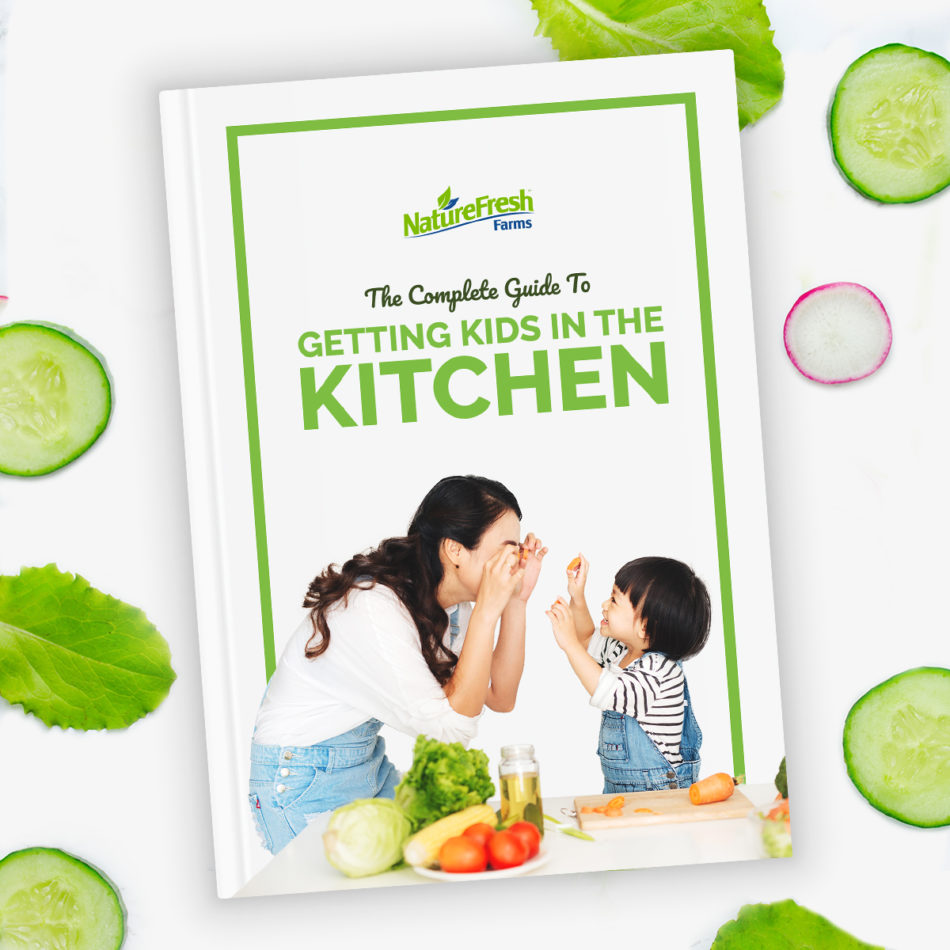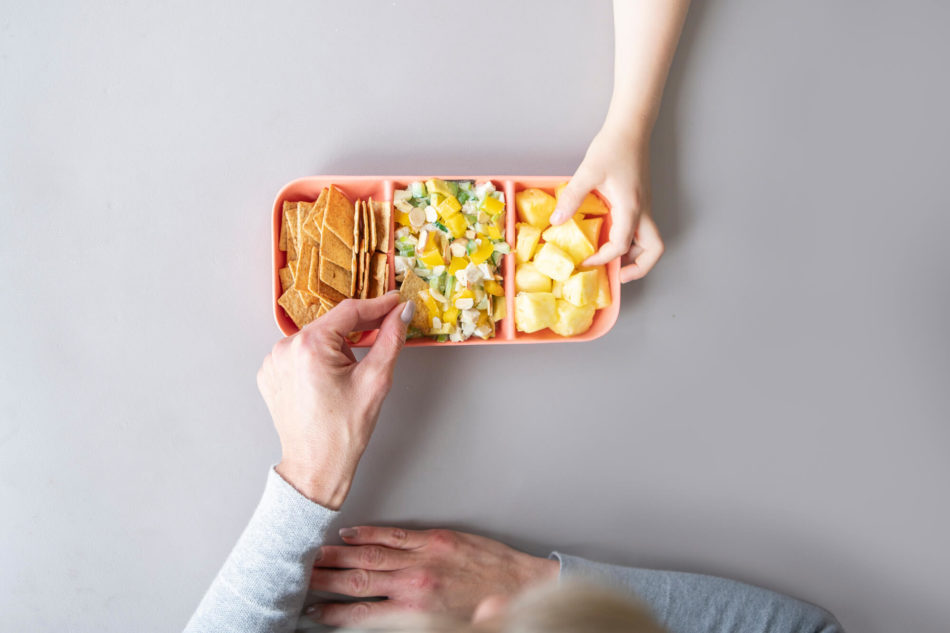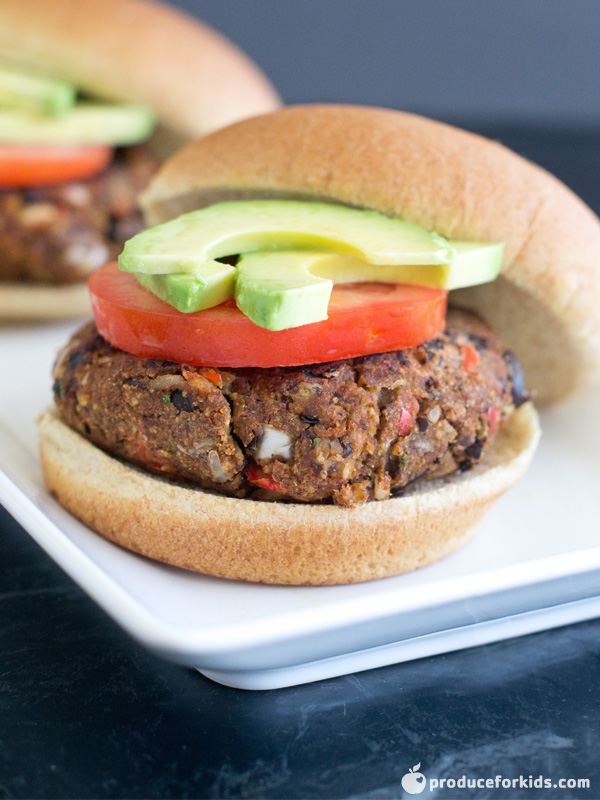Hi! It’s the Greenhouse Education Center (GEC) Nutrition Educators here to talk about why it is SO important to incorporate #KidsInTheKitchen often! Are there scientific benefits to incorporating young ones in the kitchen? How can YOU incorporate your own kids into the kitchen today? Stay tuned to find out more!
Why the #KidsIntheKitchen Challenge?

Building healthy eating habits starts at a young age, so our goal is to show children that eating veggies can be fun, especially when they are in the kitchen helping. Using the results of the #KidsInTheKitchen challenge, NatureFresh™ Farms has made a free guide that includes the top tips and recipes for getting kids involved in meal preparation while creating healthy lifestyle habits. This guide can also help families incorporate more vegetables into their diets in a fun, educational setting.
Having kids in the kitchen is important for learning and growth. Our mission here at NatureFresh™ Farms is to help kids across North America increase their skills in the kitchen and develop a love for fresh eating.
Why #KidsInTheKitchen? What’s the Importance?
What is food literacy? Food literacy is understanding food and nutrition knowledge, as well as food skills. From the seed to the fork, it is important to know how our food system works, where food comes from, what we get from food, and how to use your food skills to prepare healthy food options. Getting kids involved in the kitchen will give them lots of opportunities to have important conversations surrounding food, while helping them become more food literate.
By teaching children these food literacy skills from a young age, it allows them to develop a healthy relationship with food that will last a lifetime. From introducing new food into a child’s diet, to improving family bonds, the kitchen plays an important role in a young one’s life. Check out 4 benefits to incorporating #KidsInTheKitchen!
4 Benefits to Incorporating #KidsInTheKitchen
- Exposure – What is exposure? Exposure is consistently introducing new foods into one’s diet to familiarize a food item. Exposure helps to mature the palate by learning new tastes and senses. Exposure can also lead to establishing better relationships with food, as research has shown that ‘repeated opportunities to taste unfamiliar foods results in increased liking and consumption’ [1]. Getting your kids involved in the kitchen allows them to have greater exposure to different foods. With this exposure, children can experiment and familiarize themselves with the various foods that they are cooking with.
- Healthier Food Choices – Role models can help to teach children how to make healthier food choices as they discuss and cook with various new and exciting ingredients. Research has shown that involving kids in the kitchen results in higher rates of vegetable consumption. As children become more familiar and have a greater variety of food choices, they become more willing to try and consume vegetables [2].
- Improved Food Skills – By involving kids in the kitchen, you can allow children to learn important food skills which can help to increase their food and nutrition knowledge. Children can gain higher cooking self-efficacy by learning new skills in the kitchen that can increase their cooking confidence for the future. Studies also show that increasing children’s ‘food skills corresponds with higher rates of healthy eating discussions’ [3], [4].
- Greater Family Involvement – On top of creating healthier food choices as a family overall, getting children involved in the kitchen can also result in stronger parent-child bonds, increased parent satisfaction, and can help promote better relationships for children in the future.
“Children like what they know and they eat what they like” – Journal of Human Nutrition and Dietetics [1]
By allowing children to learn what they like through their involvement in the kitchen, they can expand their palates and ultimately make better eating choices. The ‘earlier and broader the experience, the healthier the child’s diet’ [1]. Try incorporating #KidsInTheKitchen today!
How Can You Involve #KidsInTheKitchen Today?
Need some ideas on how to incorporate kids in the kitchen? Try working together on a few of these delicious recipes today for a fun bonding and learning experience!
Avocado Chicken Salad

How can children help with creating theAvocado Chicken Salad recipe?
Preschoolers can help to wash the apple, Bell Pepper, Cucumber, and celery. Once you have the ingredients diced, preschoolers can also help to add these ingredients into the bowl and mix all of the ingredients together. By helping out with this process, young ones can learn about food, building a recipe, and develop fine motor skills!
Young children can help out as well by organizing and measuring the produce, chicken, and avocado mayo. Young ones can move ingredients from the fridge to the counters and can even describe some of the colors, tastes, and shapes of the foods they see. By doing these tasks, young children can also develop fine motor skills, learn about basic measuring, and do some exploring with their different senses!
It is important for young teenagers to also be a part of the cooking process. Kids in this age group can start to learn basic knife skills and food safety by dicing the produce and chopping the cooked chicken breasts. They can learn how to create a balanced healthy meal with the different food groups involved in this recipe. Teens can even learn how to plan meals ahead of time – such as for school lunches and dinners! This learning opportunity can help them to build confidence in the kitchen and can help prepare this age-group for meal prepping all on their own.
This recipe is a quick way to get lots of nutrients into a meal while also providing your family with the opportunity to spend time together and learn important food literacy skills.
Southwest Black Bean Burger

How can children help with the Southwest Black Bean Burgers recipe?
Preschoolers can help with this recipe by washing the Bell Pepper and Tomato, as well as rinsing the black beans. They can also help to squeeze out the extra moisture from the vegetable mixture. Another fun way for preschoolers to help with this recipe is by allowing them to mash the black beans and mix all of the ingredients together.
Young children can help by measuring out the spices and ingredients. They can help by pushing the button on the food processor, helping to mix and shape the burger patties, and even setting the cooking timer! A final fun task for them could also be to help assemble the burgers for their meal.
Young teens can learn how to use the stovetop to cook the burger patties while adjusting the temperature to the correct heat. They can learn how to open and cut an avocado and how to chop veggies. Teens can also learn how to crack an egg without losing the shells in the mixing bowl and they can even explore spices to find new flavors that they may enjoy for future meals!
This recipe is a fun way to introduce a nutritious vegetarian meal to your family while also learning new cooking skills in the kitchen!
Check Out the Free #KidsInTheKitchen Guide Today!
Want to see more examples of how to incorporate kids in the kitchen? Check out The Complete Guide To Getting Kids In The Kitchen for some more important tips and tricks on how you can get the whole family involved in meal time today!
Show Us Your Success!
We want to see your child in the kitchen! Whip up a recipe with your child, post a photo to Instagram, then tag @Nature_Fresh and use the hashtag #KidsInTheKitchen.
References
1. Cooke, L. (2007). The importance of exposure for healthy eating in childhood: A review. Journal of Human Nutrition and Dietetics, 20(4), 294-301.
2. Monsivais, Pablo, PhD, MPH, Aggarwal, Anju, PhD, MS, & Drewnowski, Adam, PhD, MA. (2014). Time spent on home food preparation and indicators of healthy eating. American Journal of Preventive Medicine, 47(6), 796-802.
3. Allirot, X., da Quinta, N., Chokupermal, K., & Urdaneta, E. (2016). Involving children in cooking activities: A potential strategy for directing food choices toward novel foods containing vegetables. Appetite, 103, 275-285
4. Jarpe-Ratner, E., MPH, Folkens, S., BA, Sharma, S., MS, Daro, D., PhD, & Edens, N. K., PhD. (2016). An experiential cooking and nutrition education program increases cooking self-efficacy and vegetable consumption in children in grades 3–8. Journal of Nutrition Education and Behavior, 48(10), 697-705.



